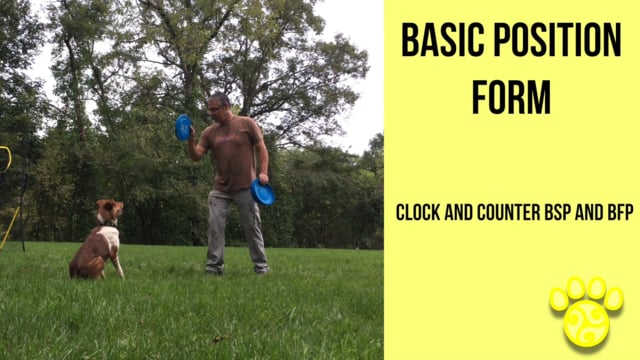
Da Hu Yellow Belt Forms for Her Green Belt Test
[vc_row][vc_column][vc_column_text]As a Disc Quan Do Yellow Belt, these forms are your test for your Green Belt. In order to pass, you have to at least look as good as daToss and Fetch, aka: Distance & Accuracy, Toss & Catch, is a disc dog discipline that uses a single disc. It is a timed event and you get scored based upon the distance... More Hu here.
Notes on This Belt Test:
This was our first crack at the Yellow Belt Forms. I thought doing them for the first time with a green dog would better approximate Yellow and White Belt performances. Epic and Loot will be taking over the forms demonstrations for Green-Black Belt while we bring da Hu along at a nice slow learning pace. Rushing these forms for NEXT is not the point.Hu needs a ton of work on basic of skills. She over-pursues and is pushy and impatient, lining up a few inches from the handler. Her actions are binary, on and off, pokey, and hard to time as a teammate. Following the handler’s movements is hard because she’s overwhelmed with the power of the Frisbee. Such is the way of a young, inexperienced drivey, athletic dog. This is why we do Disc Quan Do.
About Belt Tests
The Belt Tests are super simple. Execute each required form from your current rank in succession, in person or livestream in front of the Digital Dojo. It will take less than 5 minutes. Belt tests are available every 3 months. It’s a good progression giving teams plenty of time to explore and understand the skills before moving on.
All Disc Quan Do practitioners should aim to look at least as good as the team that demonstrates each of the forms in class. Perfection is not required, especially at the White and Yellow belt ranks. Hu and I’s performance is sloppy, as mentioned above. You should aim to look at least that good performing each form. The forms do tighten up. At Green Belt things start to get real, and a team has to be pretty solid to earn their blue Belt. Good luck, da Hu.
Anatomy of a Belt Test
While performing these forms a team should demonstrate the following:
- Stimulus control over the Drop
- Connection between dog and handler
- Noticeable cuing and responses to cues
- Control over movement – starting and stopping
- Solid and proper footwork
- Attention
 Unsolicited eye contact or Attention is a great way to hook up with a dog. If you have something the dog wants he should give eye contact in order to get access to... More to basic positions (BSP and BFP)
Unsolicited eye contact or Attention is a great way to hook up with a dog. If you have something the dog wants he should give eye contact in order to get access to... More to basic positions (BSP and BFP)
4 New Releases
Handler demonstrates 4 new releases per belt level. The idea is to demonstrate 4 new dog catchable throws in flow at a target. Both spin Spins and Twists are tricks where the dog spins 360 degrees in a clockwise or counter clockwise fashion. Spin is clockwise and Twist is counter clockwise so it is important to have a... More directions are to be demonstrated in this form.A zig zag is a nice pattern, although no pattern is necessary. I perform a fairly poor form here, looks more like a drill that I’m not interested in. You should look at least this good. Shouldn’t be hard.
Spins and Twists are tricks where the dog spins 360 degrees in a clockwise or counter clockwise fashion. Spin is clockwise and Twist is counter clockwise so it is important to have a... More directions are to be demonstrated in this form.A zig zag is a nice pattern, although no pattern is necessary. I perform a fairly poor form here, looks more like a drill that I’m not interested in. You should look at least this good. Shouldn’t be hard.
Crossing Pass From
Formerly the Front Cross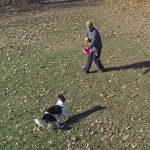 On a Front Cross, your dog switches Flanks in with you in front of them. From Clock to Counter Clockwise Flank or vice versa. Taken directly from the canine agility world, the Front... More & Throw Form, the Crossing Pass
On a Front Cross, your dog switches Flanks in with you in front of them. From Clock to Counter Clockwise Flank or vice versa. Taken directly from the canine agility world, the Front... More & Throw Form, the Crossing Pass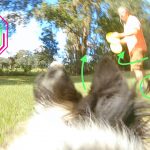 A Pass or Passing is a linear Team Movement maneuver that has the dog running or moving past the handler in close proximity, crossing or breaking the plane of the handler's body. Form is all about declaring your Flank
A Pass or Passing is a linear Team Movement maneuver that has the dog running or moving past the handler in close proximity, crossing or breaking the plane of the handler's body. Form is all about declaring your Flank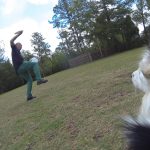 Out to the side of the handler is the Flank. If the dog is out to the handler's right or left the dog is on Flank. If the dog is moving with the... More, pulling the dog past you, and making a good solid throw that resonates with the dog’s movement – clock then counter. The imagining of the dog’s line and the pretend Front
Out to the side of the handler is the Flank. If the dog is out to the handler's right or left the dog is on Flank. If the dog is moving with the... More, pulling the dog past you, and making a good solid throw that resonates with the dog’s movement – clock then counter. The imagining of the dog’s line and the pretend Front Front is a stable position directly in front of the handler. Front is an traditional obedience skill. Usually your dog sits in this position, but standing is often acceptable as well, especially in... More Cross
Front is a stable position directly in front of the handler. Front is an traditional obedience skill. Usually your dog sits in this position, but standing is often acceptable as well, especially in... More Cross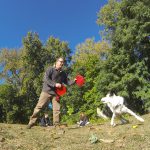 A Cross is an canine agility term that describes a change of working sides. Your dog moves from your left to your right (Heel to Side) or from Clock to Counter. Crosses are... More and throw is a critical skill here. This form gives you repetitions of the physical experience of grabbing the dog on the run and hooking up for a perfect catch. Flank, BFP, Front Cross, throw, find the dog, repeat. It also asks you to regroup before grabbing your dog again. Sounds a lot like freestyle, doesn’t it?
A Cross is an canine agility term that describes a change of working sides. Your dog moves from your left to your right (Heel to Side) or from Clock to Counter. Crosses are... More and throw is a critical skill here. This form gives you repetitions of the physical experience of grabbing the dog on the run and hooking up for a perfect catch. Flank, BFP, Front Cross, throw, find the dog, repeat. It also asks you to regroup before grabbing your dog again. Sounds a lot like freestyle, doesn’t it?
Yellow Stance Shifting Form
One of the most important forms of them all is the Yellow Stance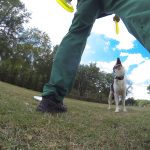 The handler's stance is important. There are many ways to stand and each way you stand can say a different thing. Stances communicate pressure and direction. Switching stances sends information to the dog. More Shifting Form. Movement is about intelligence more than athleticism, and this form is the place to find that intelligence, both physically and mentally. Shifting stances fluently from clock to counter is an unbelievably key skill for interior sequencing and flow. The idea is to make a low high toss and shift stances and return to your Basic Standing PositionStanding in front of the dog with the disc held vertically in the throwing hand is Basic Standing Position (BSP), a foundational position in the Yachi Method. More Pose before it hits the ground while demonstrating a neutral, pulling, and pushing stance shift from counter to clock.
The handler's stance is important. There are many ways to stand and each way you stand can say a different thing. Stances communicate pressure and direction. Switching stances sends information to the dog. More Shifting Form. Movement is about intelligence more than athleticism, and this form is the place to find that intelligence, both physically and mentally. Shifting stances fluently from clock to counter is an unbelievably key skill for interior sequencing and flow. The idea is to make a low high toss and shift stances and return to your Basic Standing PositionStanding in front of the dog with the disc held vertically in the throwing hand is Basic Standing Position (BSP), a foundational position in the Yachi Method. More Pose before it hits the ground while demonstrating a neutral, pulling, and pushing stance shift from counter to clock.
Balanced Position Form
Another highly productive form, the Balanced PositionIn the Play+ philosophy, "Position" is the final stage within the "Next" phase of a Cycle of Play. It acts as a pivotal link between the "Next" phase and a new "Now" phase. More Form exposes the team to most all the elements of successful Team MovementTeam Movement is how dog and handler move, as a team, out there on the field. It is a judging category in some organizations and certainly is a focus of many judges, players,... More. Basic Standing and Flatwork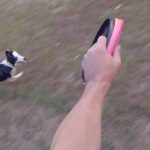 Flatwork is the stuff that happens between the catches. How the team moves and transitions, often without the disc, is flatwork. Flatwork concepts in disc dog are taken from the agility and herding... More Positions are exercised in both directions, teaching the handler to lead, the dog to follow the handler, and the team to move together. The Front Cross and the stance shifting footwork can be experienced and developed as well.
Flatwork is the stuff that happens between the catches. How the team moves and transitions, often without the disc, is flatwork. Flatwork concepts in disc dog are taken from the agility and herding... More Positions are exercised in both directions, teaching the handler to lead, the dog to follow the handler, and the team to move together. The Front Cross and the stance shifting footwork can be experienced and developed as well.
Around the World Form
A simple Around the World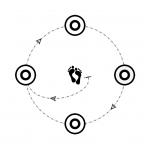 An Around the World is a disc dog flatwork pattern consisting of 4 catches in a circular pattern around the handler. This pattern is typically larger than 5 yards and often features creative... More, clock or counter. 4 throws to a dog while maintaining the flank, or the direction the dog is moving. No need for fancy throws, although you can do them if you want to. Ideally yours doesn’t look as square as team Hu. Your belt test should not be the first time you try something.
An Around the World is a disc dog flatwork pattern consisting of 4 catches in a circular pattern around the handler. This pattern is typically larger than 5 yards and often features creative... More, clock or counter. 4 throws to a dog while maintaining the flank, or the direction the dog is moving. No need for fancy throws, although you can do them if you want to. Ideally yours doesn’t look as square as team Hu. Your belt test should not be the first time you try something.
Pendulum Form
The Pendulum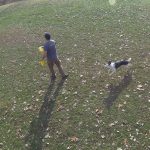 The Pendulum is a disc dog freestyle pattern where the dog performs dueling Arounds to each Flank. These Arounds are performed off the cued Drop and on the run. After the dog drops... More is an alternating Clockwise and Counter Clockwise Flank. It can be done using flatwork from Basic Flatwork Position
The Pendulum is a disc dog freestyle pattern where the dog performs dueling Arounds to each Flank. These Arounds are performed off the cued Drop and on the run. After the dog drops... More is an alternating Clockwise and Counter Clockwise Flank. It can be done using flatwork from Basic Flatwork Position Basic Flatwork Position (BFP) is a standard position of the handler in the Working Flank; hand reaching out towards the dog (usually with a disc) with the dog on the same plane as... More (BFP), where you pull the dog around, clock then counter delivering a throw each time, or it can be done as dueling Arounds, which has the handler sending the dog around clock then counter, making a resonant throw in each direction.
Basic Flatwork Position (BFP) is a standard position of the handler in the Working Flank; hand reaching out towards the dog (usually with a disc) with the dog on the same plane as... More (BFP), where you pull the dog around, clock then counter delivering a throw each time, or it can be done as dueling Arounds, which has the handler sending the dog around clock then counter, making a resonant throw in each direction.
Passing Form
The Crossing Pass Form really comes in handy here. Deliver 4-6 throws that bring the dog across the handler’s plane in close proximity to the handler.
Spin and Twist Form
Perform controlled and connected Clock Spins and Counter Clock Twists with your dog. These spins should be cued properly and executed with the handler. Reinforcement is not only allowed it is encouraged.
Give Demonstration
The team demonstrates a give from a static position as well as a retrieve.
Earn Your Green Belt
Perform these forms clean, connected, and competently, and you will earn your Green Belt.
Open Enrollment and Sample Belts
[/vc_column_text][vc_row_inner][vc_column_inner width=”1/2″][vc_cta h2=”Become a Member of the Digital Dojo” h4=”Lemme Get Some of that Disc Quan Do” add_button=”bottom” btn_title=”Enroll Now” btn_style=”flat” btn_color=”black” btn_align=”center” btn_i_icon_fontawesome=”fa fa-money” add_icon=”top” i_icon_fontawesome=”fa fa-money” i_color=”black” btn_link=”url:http%3A%2F%2Fpvybe.com%2Fproduct%2Fdisc-quan-do-the-disc-dog-freestyle-martial-art%2F|||” btn_add_icon=”true” btn_button_block=”true” btn_custom_onclick=”true”]Get enrolled in Disc Quan Do and start working out at the Digital Dojo.[/vc_cta][/vc_column_inner][vc_column_inner width=”1/2″][vc_cta h2=”Disc Quan Do Yellow & White Belts” h4=”Lemme See Some More Disc Quan Do” add_button=”bottom” btn_title=”Show Me the Dojo” btn_style=”flat” btn_color=”black” btn_align=”center” btn_i_icon_fontawesome=”fa fa-magic” add_icon=”top” i_icon_fontawesome=”fa fa-magic” i_color=”black” btn_link=”url:http%3A%2F%2Fpvybe.com%2Fdigital-dojo%2Fdisc-quan-do%2F|||” btn_add_icon=”true”]White and Yellow Belt forms are free to the public for a limited time.[/vc_cta][/vc_column_inner][/vc_row_inner][/vc_column][/vc_row]






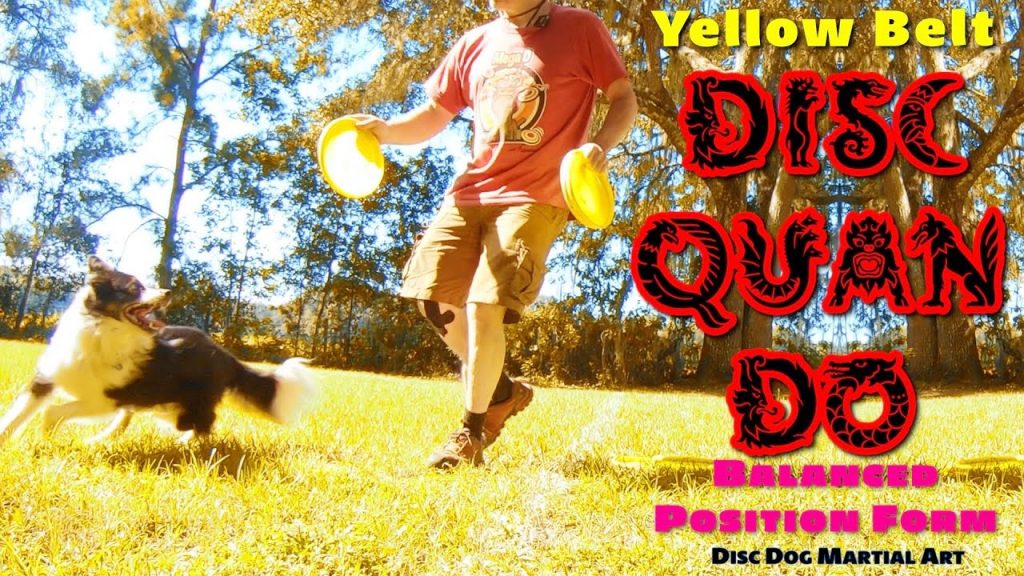
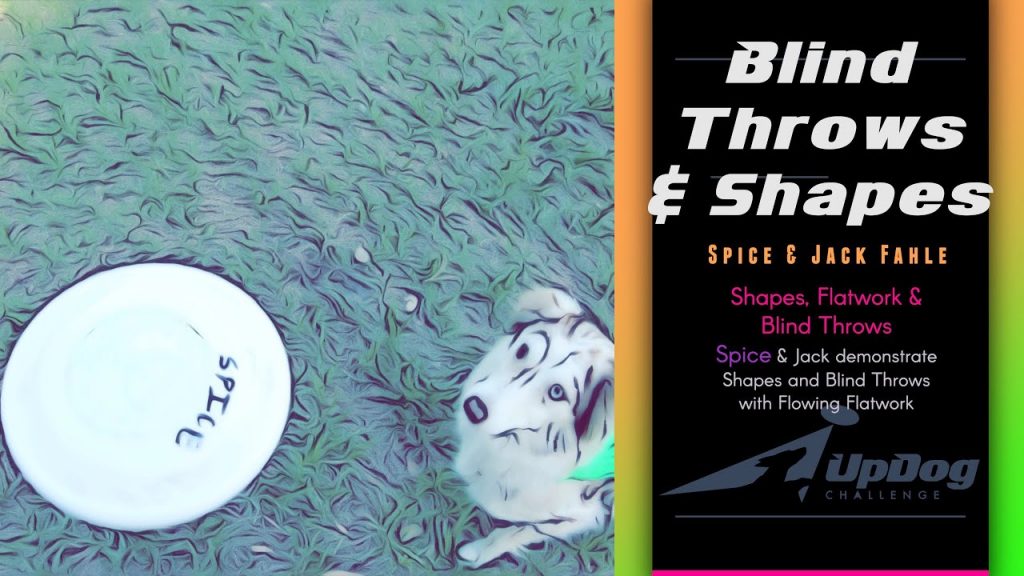
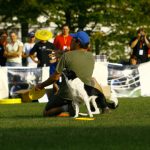
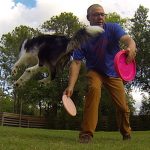
Responses